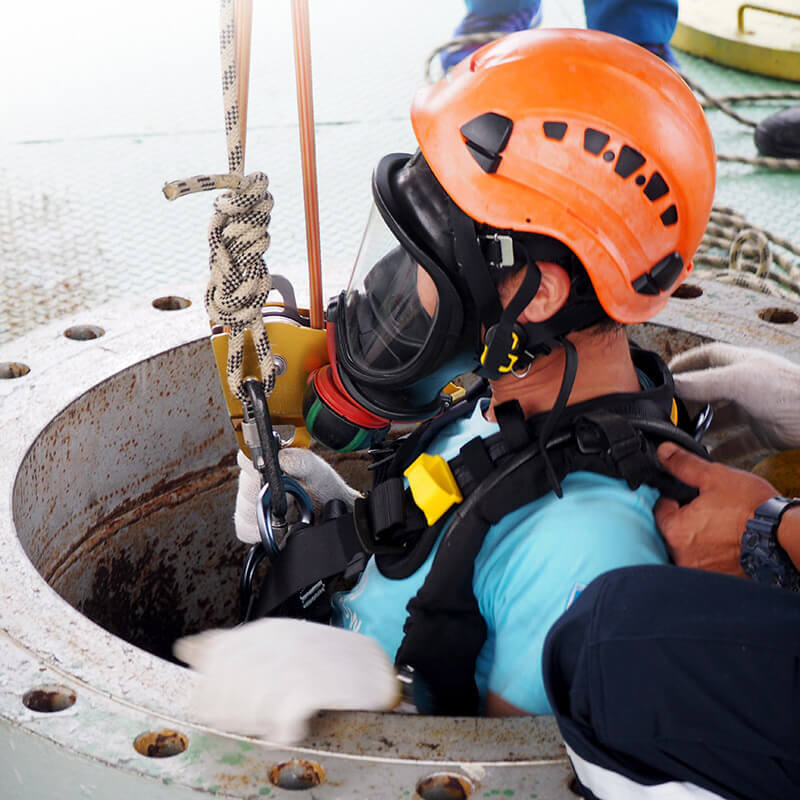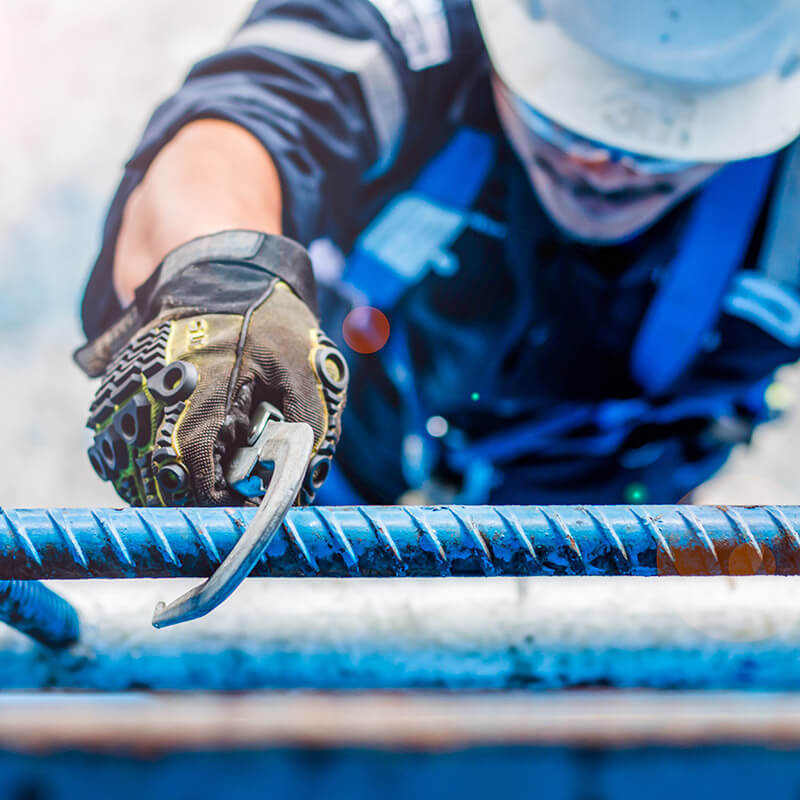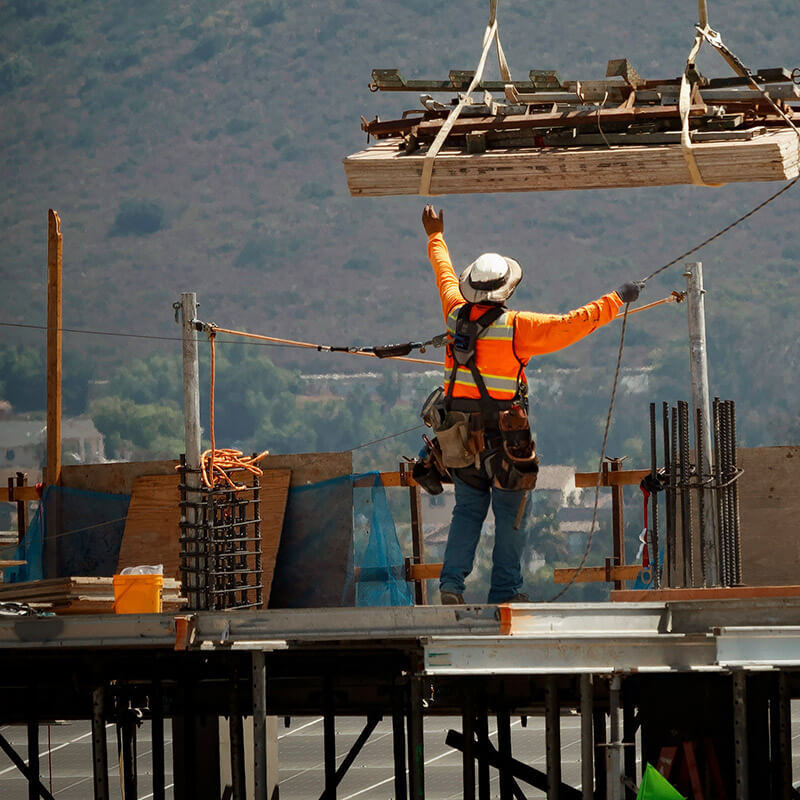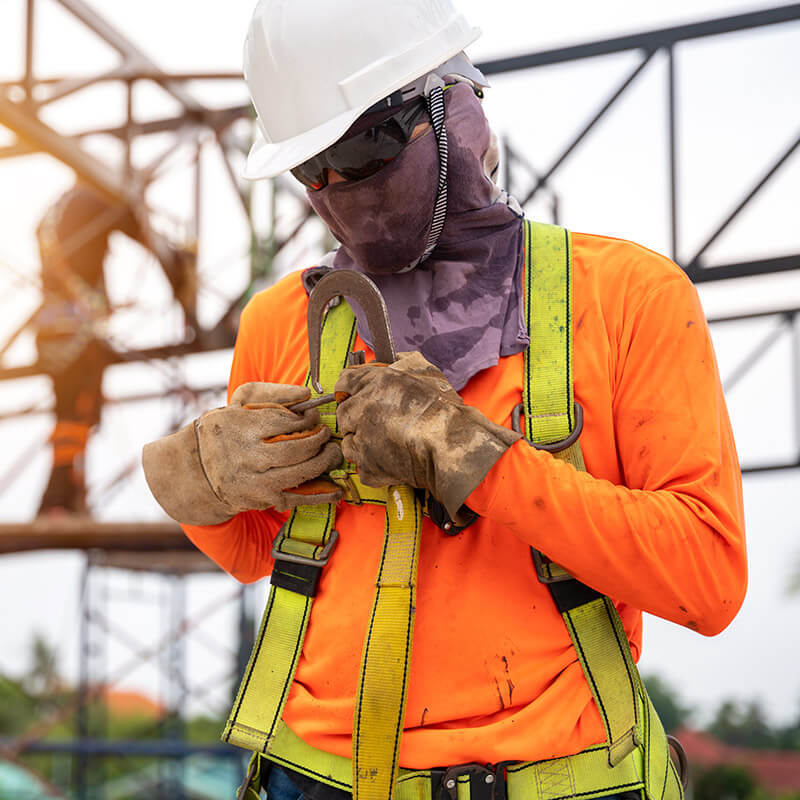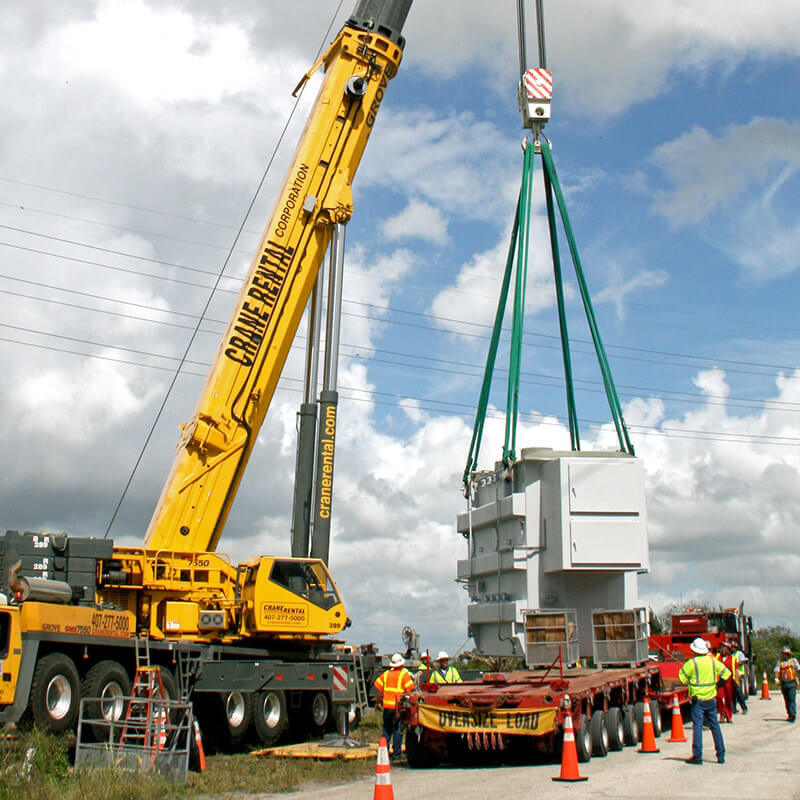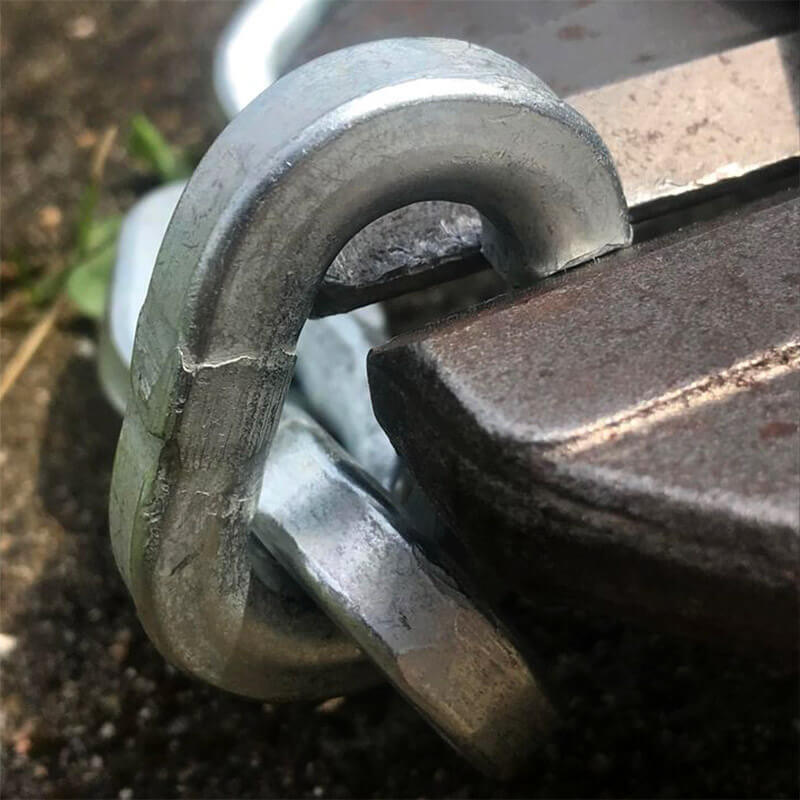What is the OSHA Rule for Fall Protection?
Falls are a major cause of workplace deaths, especially in construction. The Occupational Safety and Health Administration (OSHA) has strict rules to prevent this. These rules say that if you're working 4 feet or higher above the ground, your employer must keep you safe from falls and objects falling on you.
Knowing these OSHA rules is not just about following the law. It's about saving lives and keeping workers healthy on the job.
Key Takeaways:
- OSHA fall protection standard is crucial for preventing workplace fatalities due to falls from elevations.
- Employers are mandated to provide fall protection measures such as guardrails and safety nets for employees working at heights of 4 feet or above.
- A personalized fall protection plan needs to be in place for residential roofing tasks when conventional measures are not feasible.
- Protection systems must be used around holes, hoist areas, runoff, and dockboards to prevent employees from falls of 4 feet or more.
- Specific exemptions apply, like for pits under 10 feet deep, provided they are accessed only by trained and authorized employees.
- Compliance with OSHA fall protection requirements is not only a legal duty but is imperative for cultivating a culture of safety.
Understanding OSHA's Role in Fall Protection
OSHA is important for keeping workers safe by making sure key safety rules are followed. They focus a lot on preventing falls, which can be very dangerous at work.
The Purpose of OSHA in Workplace Safety
OSHA aims to stop people getting hurt or sick at work. Falls are a big cause of work deaths. Knowing and following OSHA's fall protection rules is crucial.
These rules help save lives and make companies safer places to work. They push companies to manage risks better and train their staff to avoid accidents.
Scope of OSHA Fall Protection Regulations
OSHA’s rules about fall safety cover many situations. Varieties of protections are needed for different risks, followed by different kinds of jobs. For example, six feet in work like building, but four feet elsewhere. This includes work on scaffoldings or near edges without protection, and even near skylights.
This may include guardrails, nets, and special gear to prevent falls or make them less dangerous. By following these rules, companies show they care about safety. This leads to fewer accidents and safer workplaces for everyone.
General Requirements for Fall Protection
Employers must follow OSHA rules on fall protection. They have to make sure workers are safe from falls of four feet or more. This is key to avoid injuries and deaths at work, especially in high places like in construction.
Fall and Falling Object Hazards Defined by OSHA
OSHA says any work area where falls or falling objects could happen must have safety measures. These dangers are around open edges, holes, or places where objects might drop. To stay safe, OSHA requires equipment or changes to the site to lower these risks.
Criteria for Fall Protection Measures
Meeting OSHA's fall protection rules means using certain safety methods. These include guardrails, safety nets, and gear to catch falls. The rules specify how these systems must be built and kept up. This ensures they work well to keep workers safe.
- Guardrail systems must reach a top edge height of approximately 42 inches to prevent employees from toppling over.
- Safety net systems are required where the use of guardrails or personal fall arrest systems is impractical. They must be tested with a 400 pound sandbag drop to ensure their strength and resilience.
- Personal fall arrest systems, crucial for workers on surfaces like residential roofs or formworks, must be rigorously tailored to the job tasks and individual user needs, including correct harness fitting and secure anchor points.
By sticking to these rules, OSHA hopes to cut down on fall accidents. Falls are a big cause of deaths and injuries in jobs like construction. Employers have a big part in making sure their workplaces are safe for everyone.
Specific Scenarios and OSHA Fall Protection Guidelines
The Occupational Safety and Health Administration (OSHA) points out many situations where we must be extra careful about fall protection. It's important to follow these rules to keep workers safe and obey the law. They are especially key in jobs with high fall risks.
Protection for Workers on Walking-Working Surfaces
OSHA requires protective measures for anyone working in places where falls are possible. This rule covers dangers like edges without protection, hoist areas, and holes. Making sure these areas meet OSHA's standards helps prevent falls and keeps workers safe.
Guardrail and Safety Net Systems Requirements
For places where workers could fall from 4 feet or more (in general jobs) or 6 feet (in construction), OSHA says you must have guardrails or safety nets. These systems need to be strong, checked often, and fit well to stop falls.
Personal Fall Protection System Utilization
OSHA also tells us to use things like full-body harnesses, lanyards, and lifelines in some cases. These personal fall protection systems are needed in certain high places or where there's no other way to stay safe. They must pass OSHA's checks to work right and keep workers from falling.
Following these OSHA guidelines lets employers make sure working at heights is less risky. This means setting high standards for gear, training, and safety habits.
What is the OSHA Rule for Fall Protection
The OSHA fall protection rules aim to keep workers safe, reducing the chances of injuries or deaths from falls. They focus on helping everyone follow the rules right and make the workplace safer for all. It's key to know and follow these rules to keep everyone safe.
Fall protection is needed in certain situations:
- In construction, it's at heights of six feet or more.
- For general industry, it starts at four feet high.
- Shipyard workers get protection at five feet or more.
- Longshore operations require it at heights of eight feet.
Safety nets can be used up to 25 feet below to catch falling workers. Ladders also need special care:
- Don't place a ladder's base further than half its height from a wall.
- Ladders should stick out at least three feet at the top to help people climb down safely.
OSHA also deals with protection for holes over six feet high on work surfaces. Employers must prevent falls by covering these holes or using guardrails.
Guardrails are crucial for preventing falls. They're a must on any edge over four feet high without protection. Similar rules apply when people are close to dangerous equipment, even if the drop is not too far. For steel work, protection is a must at 15 feet or more above the ground.
Falling accidents are serious. In 2016, 849 workers died this way. These rules aim to prevent such tragedies and help keep job sites safe and legal.
Training is also key. Workers in construction, where falls are likely, must be taught how to stay safe. Knowing the rules and how to act in danger can save lives. By working together, we can reduce risks and make work safer for everyone.
Fall Protection Plans and Training
Falls are a major cause of work-related injuries, pushing OSHA to set firm safety rules. These rules include making detailed fall protection plans and giving thorough training. Both steps are key to keeping workers safe. Let's explore what's needed to meet OSHA's standards.
Developing a Compliant Fall Protection Plan
In some jobs, it's hard to use regular fall protection. This could be because of how the work is done or where it's located, like building edges or roofs. For these cases, OSHA has a standard, 1926.502(k), that helps employers make special safety plans. These plans look closely at each worksite's conditions. They include:
- Determining if standard fall protection is safe and doable.
- Using special areas and monitoring when the usual methods won't work.
- Explaining how to use guardrails, nets, and personal fall arrest systems based on the job.
- Telling who does what to make sure the plan runs well.
Fall Protection Training Requirements
Routine training is a must, according to OSHA, under rule 1926.503. This training teaches workers to spot and avoid fall dangers. It covers a wide range of safety topics, considering the many types of fall risks workers face.
- Spotting fall risks and knowing what to do to stay safe, as rules require.
- Building, checking, and taking down fall protection the right way.
- Training specific workers to watch and set up fall safety systems correctly.
- Retraining folks whenever job risks change or if they need to learn more.
Worker training needs to be officially signed off. This shows who got trained, when, and by whom.
So, by having solid fall safety plans and making sure everyone is trained, the chance of serious falls lowers on job sites.
Exemptions and Exceptions Within OSHA Fall Protection Regulations
The Occupational Safety and Health Administration (OSHA) has strict rules on fall protection. These help prevent workplace accidents. But, there are exceptions to these rules. They let employers adjust safety methods for different cases without risking safety. Knowing these exceptions is vital for following the rules and keeping workers safe.
- Portable Ladders: Fall protection isn't required for portable ladder use if other safety rules are followed.
- Inspections and Assessments: Tasks like site inspections before or after construction might not need full fall protection if the danger is low.
- Entertainment Industries: The sides of stages in entertainment may sometimes not need as much protection due to their unique needs.
- Powered Platforms and Aerial Lifts: Safety for these is handled differently, sometimes requiring less standard fall protection.
- Telecommunications and Electrical Work: Work in telecoms and electrical sectors follows its own safety guidelines, which can be different from the usual fall protection rules.
OSHA allows exceptions in its rules for various industries, based on practical needs. Yet, the main goal is always the same: worker safety. This is achieved by using the right fall protection gear and following all safety rules strictly.
OSHA Fall Protection Equipment and Inspection
It's very important for businesses to follow OSHA's strict rules. These are for keeping work areas safe and ready for any falls. OSHA sets the standards for fall protection equipment and how it should be checked.
Standards for Guardrail, Safety Net, and Personal Fall Arrest Systems
Guardrails must be at least 42 inches tall. They should not be more than three inches off. They stop people from falling off high places. Guardrails need to hold up against 200 pounds of force. Middle rails and other parts must handle 150 pounds, to make them stronger.
Safety nets are put up to 30 feet under where people work. They have to be strong, able to hold 5,000 pounds. A 400-pound sandbag is dropped in them to test them. This simulates a person falling. The holes in the nets should be no bigger than six inches. This stops people from getting tangled in them.
Fall protection for individuals is also strictly tested. Dee-rings and snaphooks, for example, must not bend under 3,600 pounds of weight. This ensures they will not fail when they are needed most.
Inspection and Maintenance Protocols
Equipment checks are done regularly to keep everyone safe. Everything needs to be looked at before use and at least once a year. A qualified person should do this. They need to follow detailed rules from OSHA and other groups. This includes checking for damage on harnesses and the strength of buckles and rings.
All lifelines must also get a once-over every year. This includes vertical and horizontal lines, as well as SRLs. Proper training for staff or hiring experts makes sure everything is in good shape. This helps avoid accidents from falls.
With careful checks, regular upkeep, and following OSHA, work sites are safer. This keeps employees from harm and the company in line with the law. It also prevents big problems that could cost a lot of money.
Conclusion
After looking at OSHA's fall protection rules, we see they aim to make workplaces safer. These rules have been in place since February 6, 1995. They say that if a worker might fall from a height of 4 feet or more, their employer must make sure they are safe. This includes using gear to prevent falls or keep workers from getting hit by falling objects.
It’s important to know these rules are always being improved. OSHA listens to feedback and makes changes based on 162 comments and other input. They use this feedback to better fit the rules to different jobs, with special rules for some, like those in telecoms or power.
Last but not least, OSHA stresses how essential it is for employees to be well-trained. This training helps workers know about risks and how to use safety gear. Together with the rules and ongoing improvements, this training is key to keeping workers safe from falls. This shows OSHA’s commitment to always do better and keep workplace safety a top priority in the U.S.
If you are looking to stay safe and make sure you meet OSHA requirements check out our in stock and ready to ship fall protection equipment and products. As well as fall protection brands like Palmer Safety.
What Type of Rope Is Best for Climbing?
Dec 9th 2025
What Are the Two Types of Kernmantle Rope?
Nov 25th 2025
What Is a Kernmantle Rope Used For?
Nov 21st 2025
What Is a Fall Protection Harness?
Nov 14th 2025
What are the four components of a PFAS?
Nov 7th 2025
Is Palmer Safety OSHA Compliant?
Nov 3rd 2025
What’s the Hardest Chain to Cut?
Oct 20th 2025
What are the most common tools used in rigging?
Oct 13th 2025
What Is the Strongest Security Chain?
Oct 7th 2025



